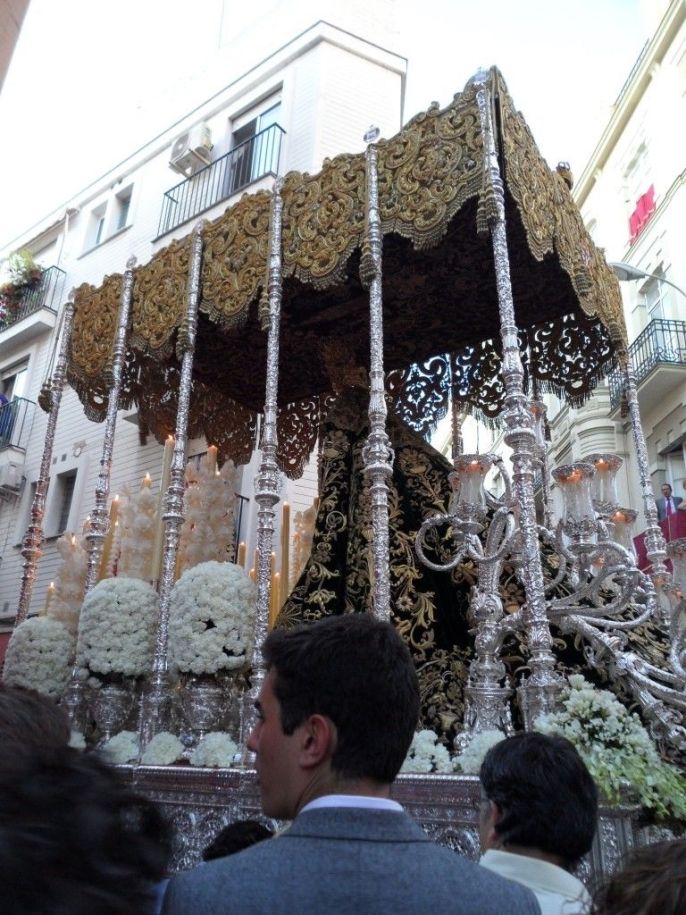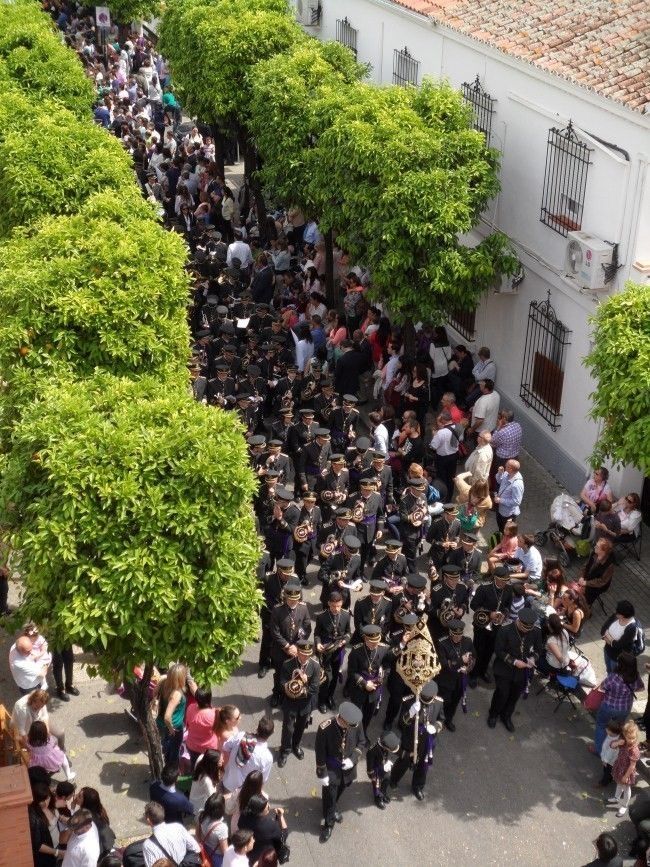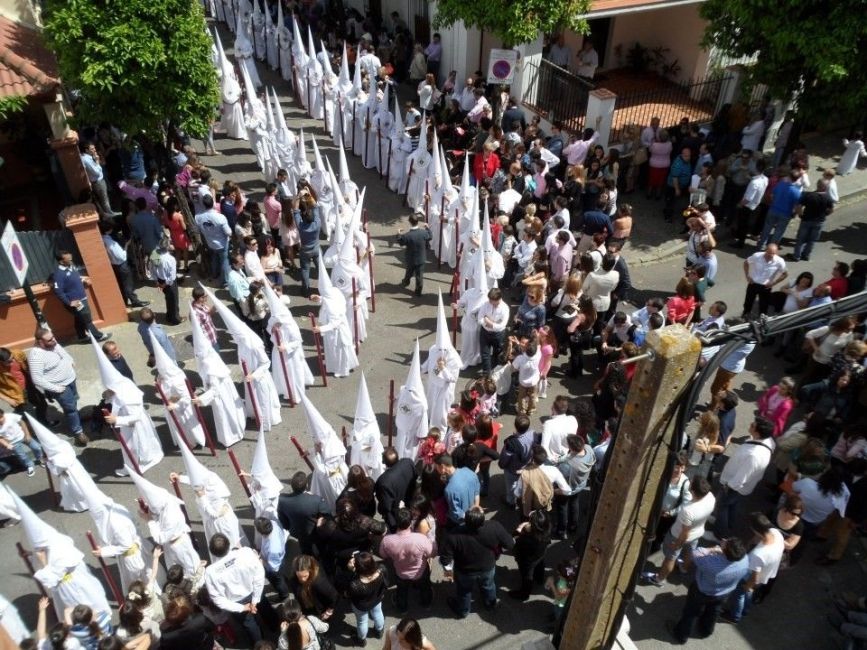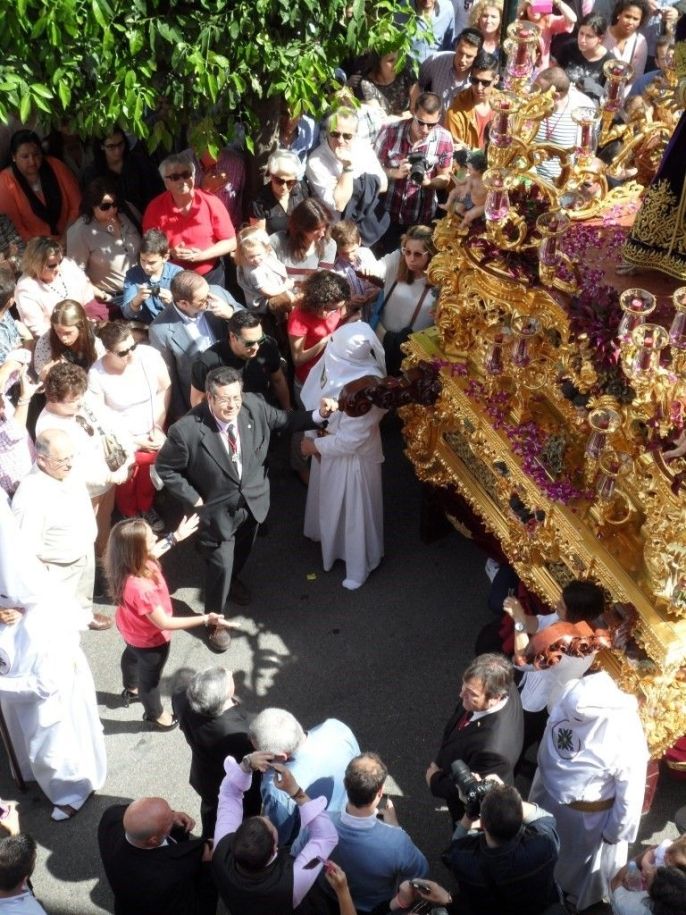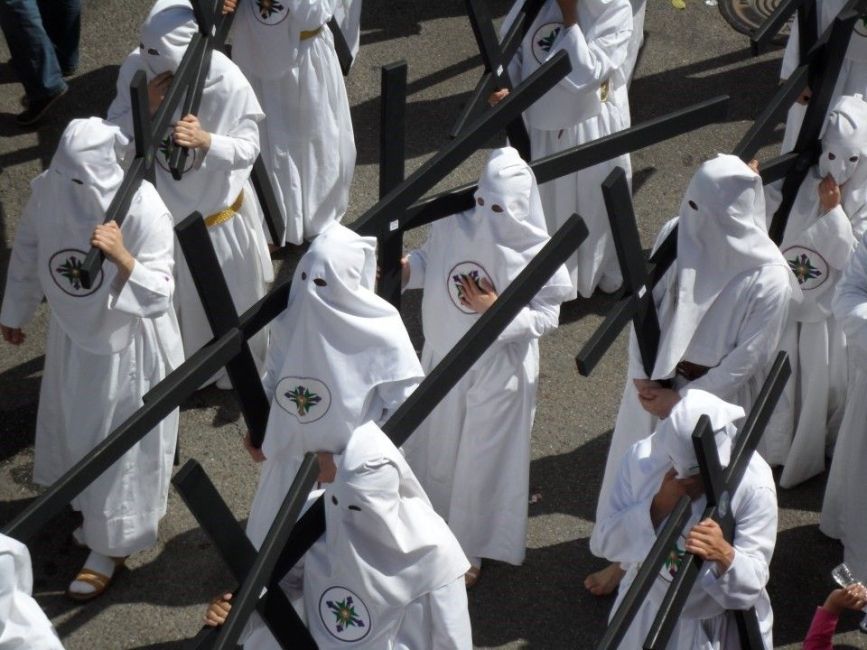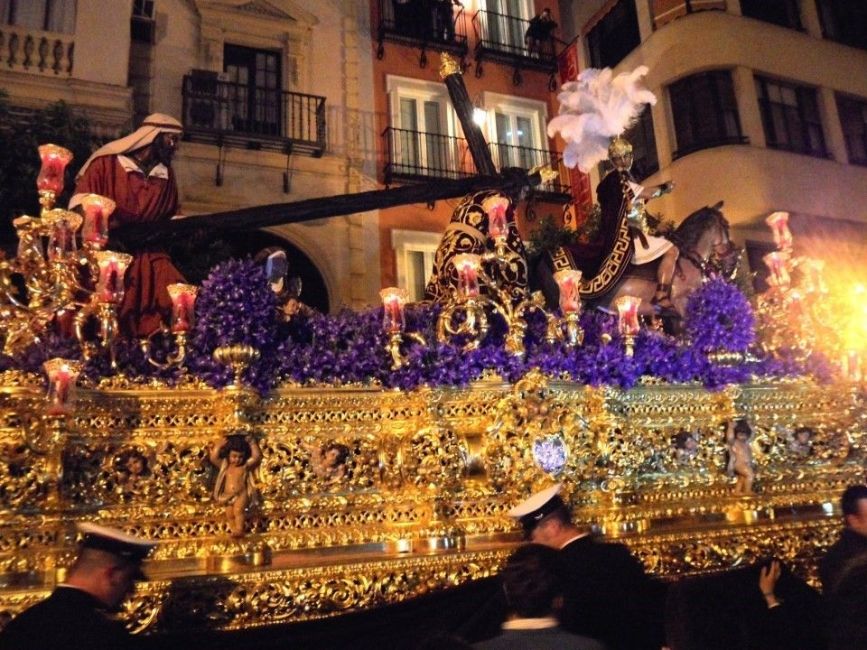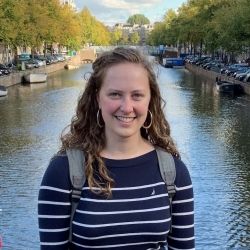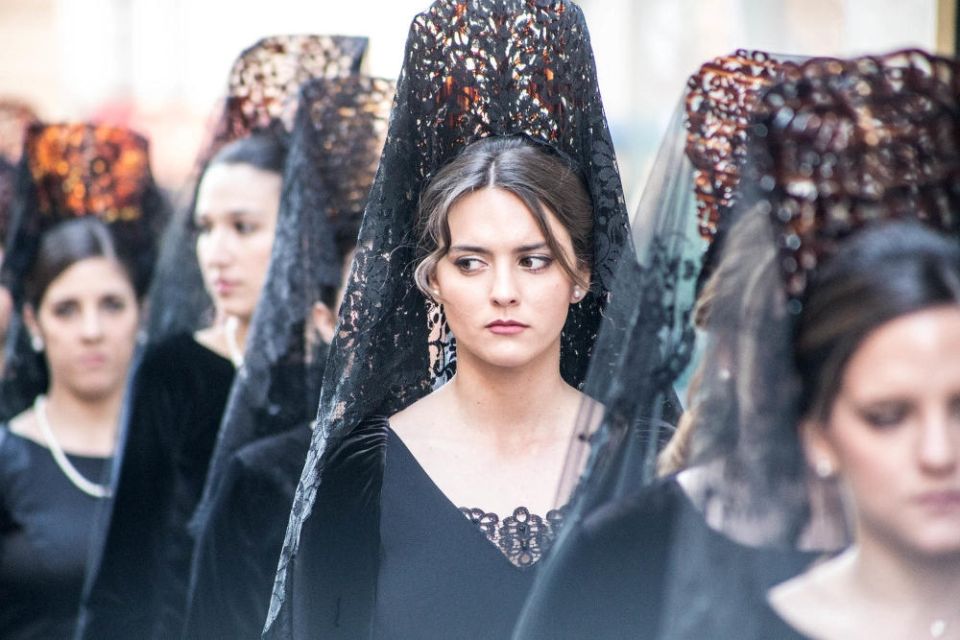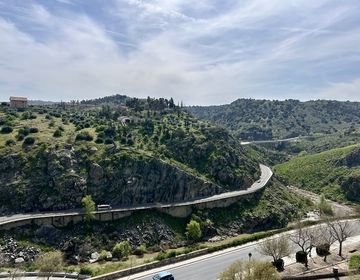Sevilla's Semana Santa
In a few days, one of the most important celebrations of the year will take place in Spain: Semana Santa, or Holy Week. Sevilla, in southern Spain, celebrates Semana Santa like no other. I experienced my first Semana Santa there as a senior in college during my study abroad year. Many of my classmates decided to travel to escape the crowds, but I’m glad I stayed behind to experience one of the biggest traditions I always read about in my Spanish textbooks. Not all sevillanos enjoy the craziness Semana Santa brings, so they may take advantage of the time visiting other nearby cities or soaking up some sun on the beach.
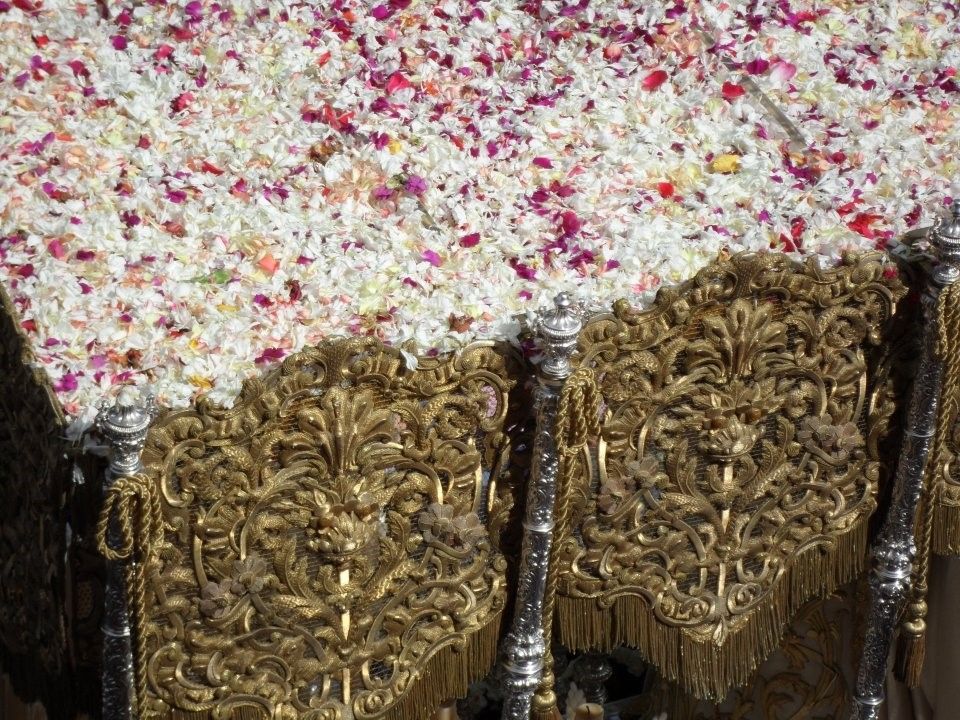
The city is completely transformed as major roads are blocked off and the population seems to triple overnight. Restaurants and bars have extended hours (and higher rates) and little kiosks with churros, nuts and cotton candy seem to pop out of nowhere.
During this week, church brotherhoods from all over the city celebrate by displaying a large paso (or float) through the streets. Each paso portrays a part of the Easter story as well as many versions of la Virgen weeping for her son. Some of my pictures will help me describe the experience! Check out one of Sevilla's videos for a glimpse of Semana Santa.
This was the very first paso I saw on a narrow street in the city center. We were uncomfortably packed together and I still remember police coming through to push people back (literally) out of the way of the paso. If you are claustrophobic, Semana Santa is something you probably don’t want to witness up close and personal from the street.
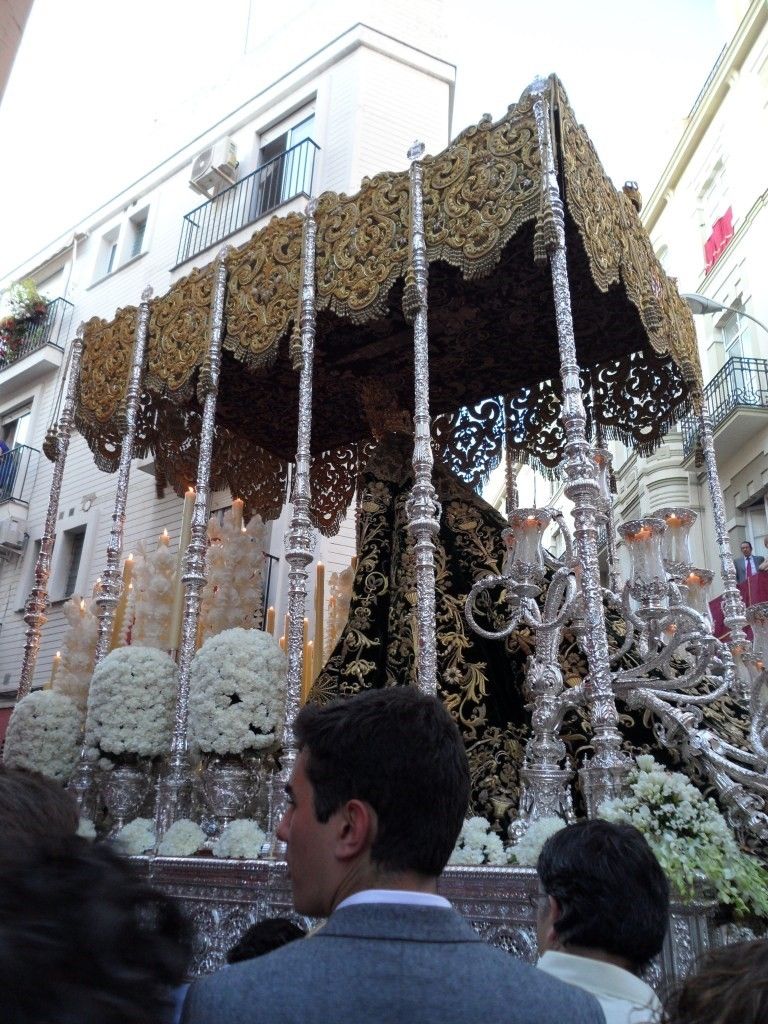
The second day I had the privilege of seeing two pasos from the balcony of an apartment a couple streets away from my host mom’s house in Triana. They had three different balconies on two different levels so I got some great shots!
Whenever a paso exits or enters its church, the national anthem is played. Some pasos have music accompaniment but others are silent. When the paso is close, the whole crowd will “shhhh!” everyone as a sign of respect. Often times when you see the paso at the end of the street, it could be about 30-40 minutes before it will actually pass in front of you.

Perhaps the strangest part of Semana Santa for me and I imagine for other Americans, are the nazarenos. These members of the church, children or adults, wear tunics and capirotes (the large cone-shaped hats) which appear similar to the clothing of the KKK. However, nazarenos have a completely opposite connotation as each of them symbolize Christ and the robes are used to hide their identity. I can’t imagine walking around for 6, 7, 8+ hours in one of these hooded, heat-trapping outfits. Many nazarenos hold the front of their hood to adjust the eye holes and I saw more than one with foggy glasses as the unforgiving sun beat down.
The colors of their clothes vary depending on the brotherhood and they usually walk in two or three rows holding cirios (candles). There can be anywhere from hundreds of nazarenos to over 3,000 in one brotherhood! The nazarenos also pass out candy and little cards with a pictures of Christ or their version of the Virgen, which is a huge draw to child onlookers.


The paso itself is probably the most impressive part to me due to its size and how it is presented. The pasos are not transported on wheels like our floats for the 4th of July; they are carried by men who aren’t afraid to sacrifice their shoulders and backs called costaleros. This group of men, numbering anywhere from twenty or more, practice carrying the structure (weighing as much as a car) months in advance while shuffling their feet in unison. They wear a faja wrapped tightly around their middle for back support and a costal on their head and shoulders. The costal is a strong piece of rolled-up cloth forming a small platform for the base of the neck where the bottom of the wooden structure rests. You can see how they prepare both in this video!
Many costaleros will experience health problems due to the immense amount of weight bearing down on their necks. I saw groups of costaleros practicing at night through the streets before Semana Santa, but unfortunately I always saw them without my camera, so here is a Wikipedia image of how they look underneath the paso:
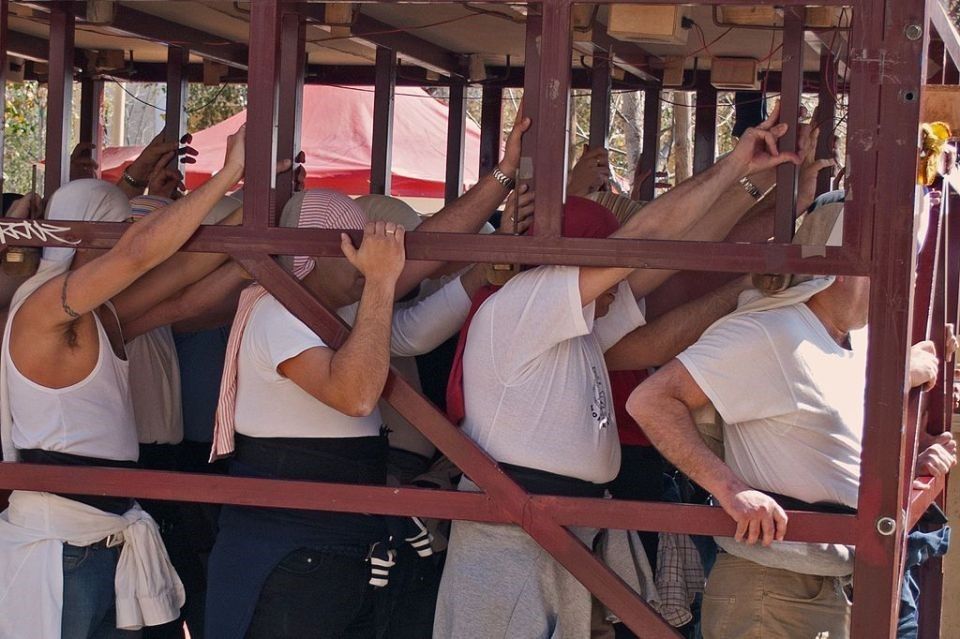
When the costaleros are actually participating in Semana Santa, they have a guide or a capataz directing them through the streets. When the paso stops for the costaleros to rest, they know to stand up again when the capataz uses a type of knocker called a llamador. After three knocks, the costaleros jump up in unison and the crowd claps. The figures on the paso always look like they are going to fall off after the costaleros jump up, but they are designed to endure this type of transportation. A dramatic saeta is normally sung by someone on a balcony, but this particular paso had a woman singing in front. The costaleros get to rest during this and the crowd is silent. Watch here for an example.
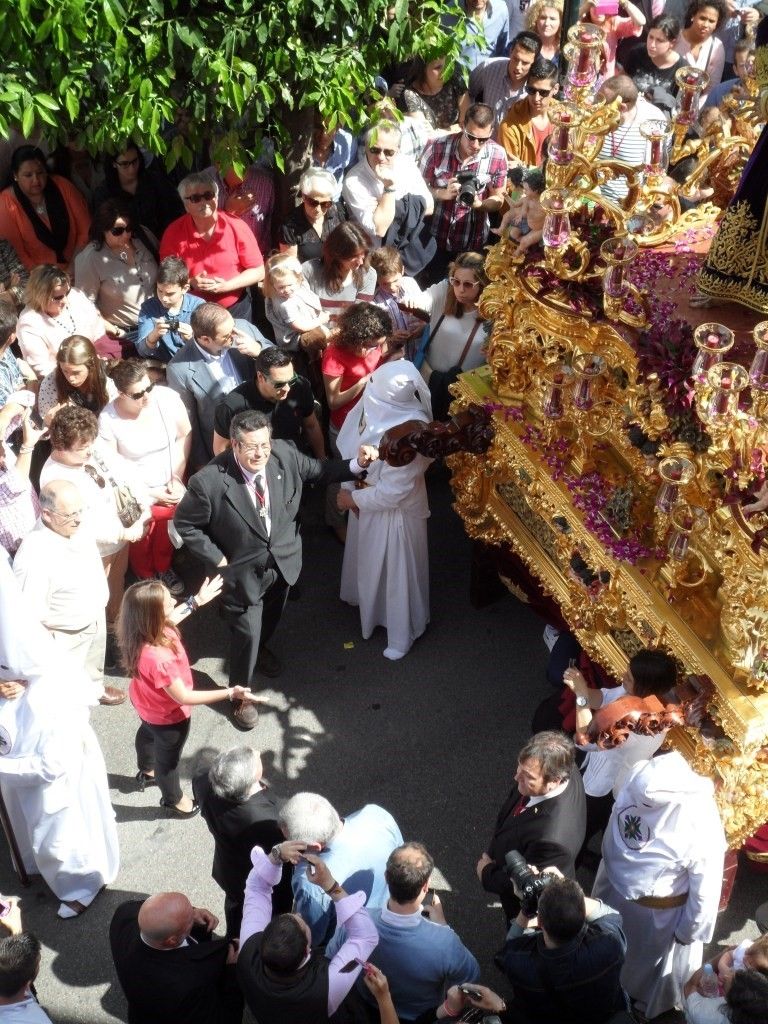
A penitente looks similar to a nazareno but they do not wear capirotes. They repent their sins by carrying crosses unlike the nazarenos who carry cirios.
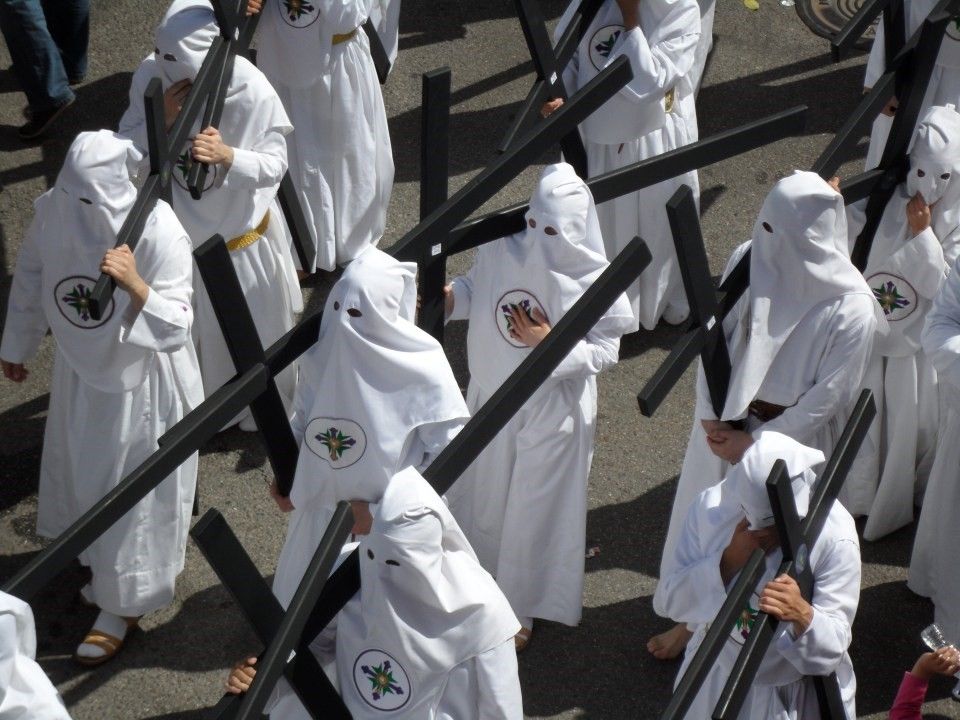
Other residents enjoyed the view from above as well:

The second paso with La Virgen had people throwing rose petals:
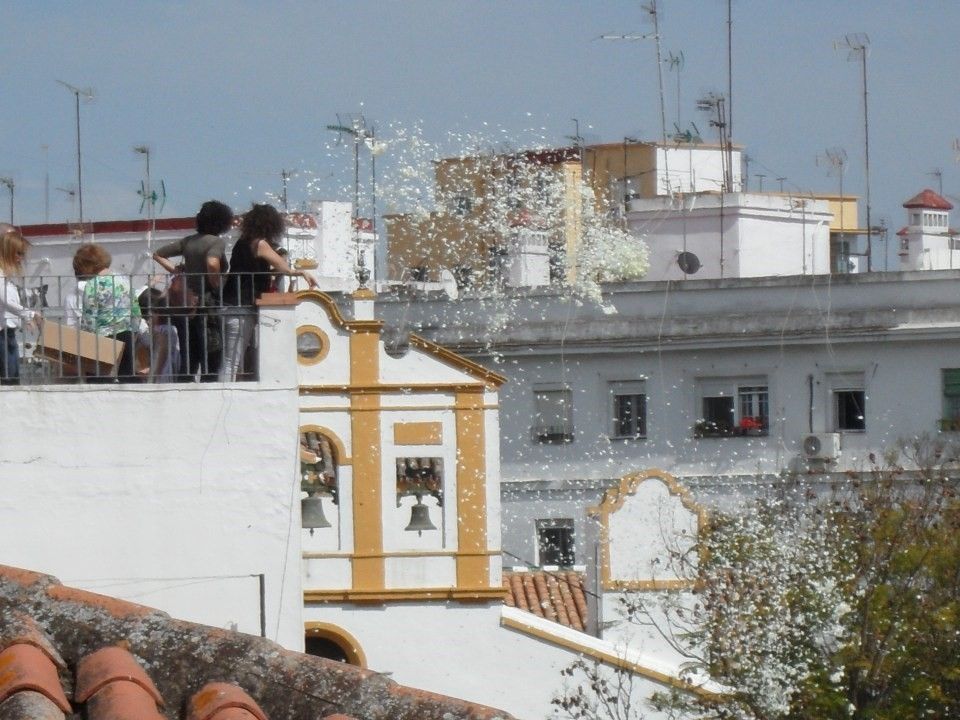
Semana Santa in general had a mix of smells including cigarette smoke, tapas, and incense:

La Virgen:
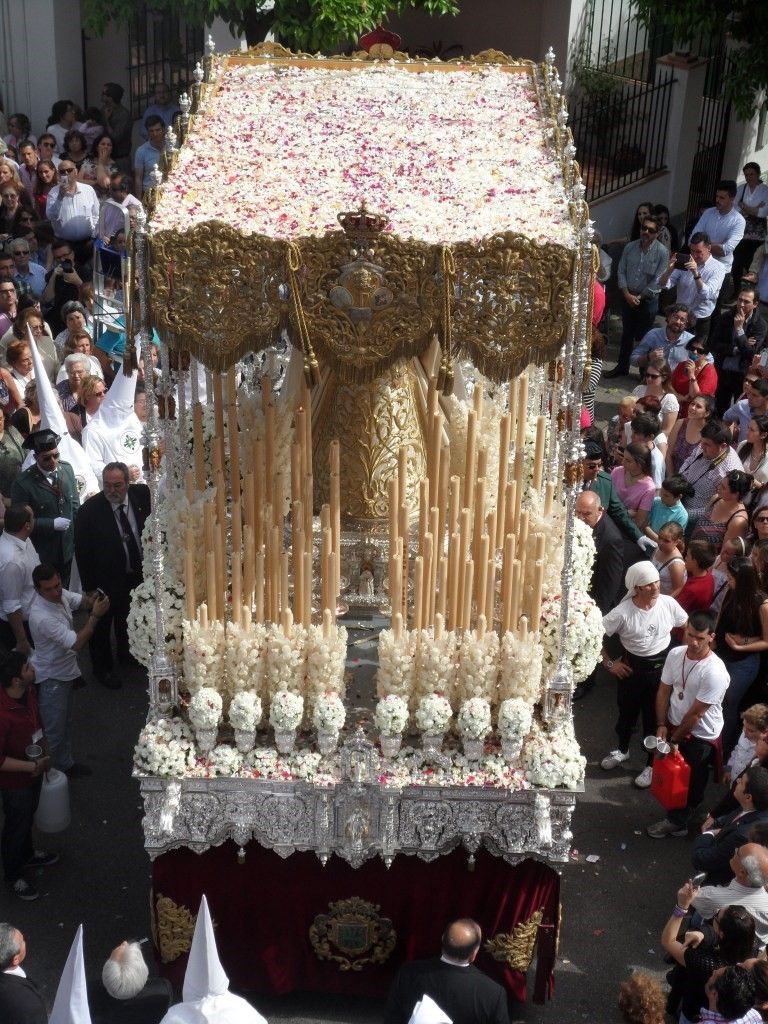
Another paso in the city center. We literally couldn't get any closer:
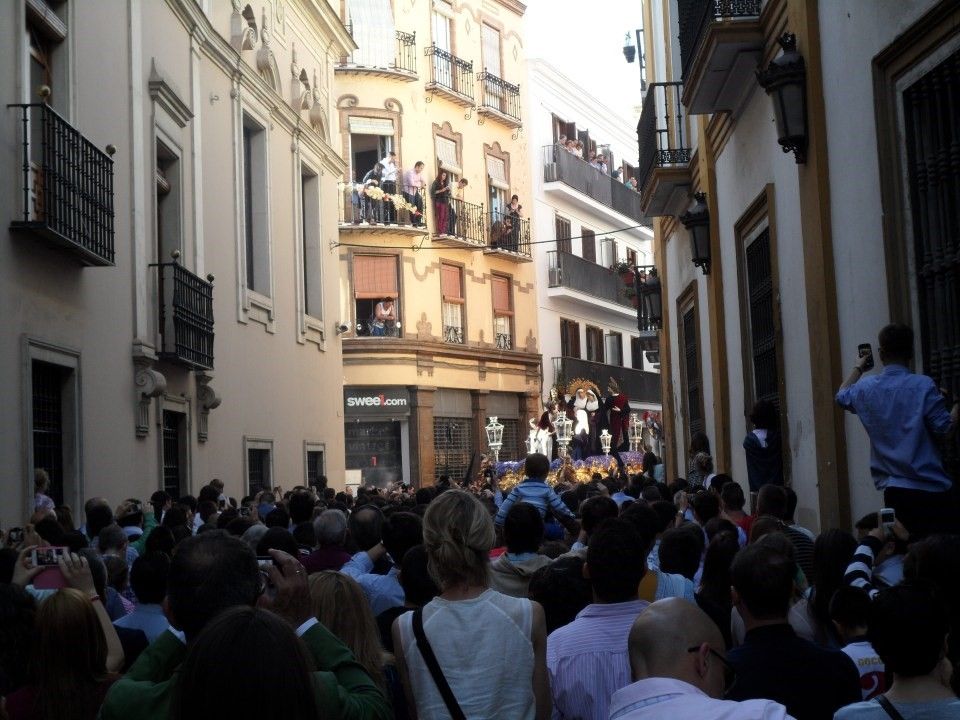
Close-up of a paso inside its home church:
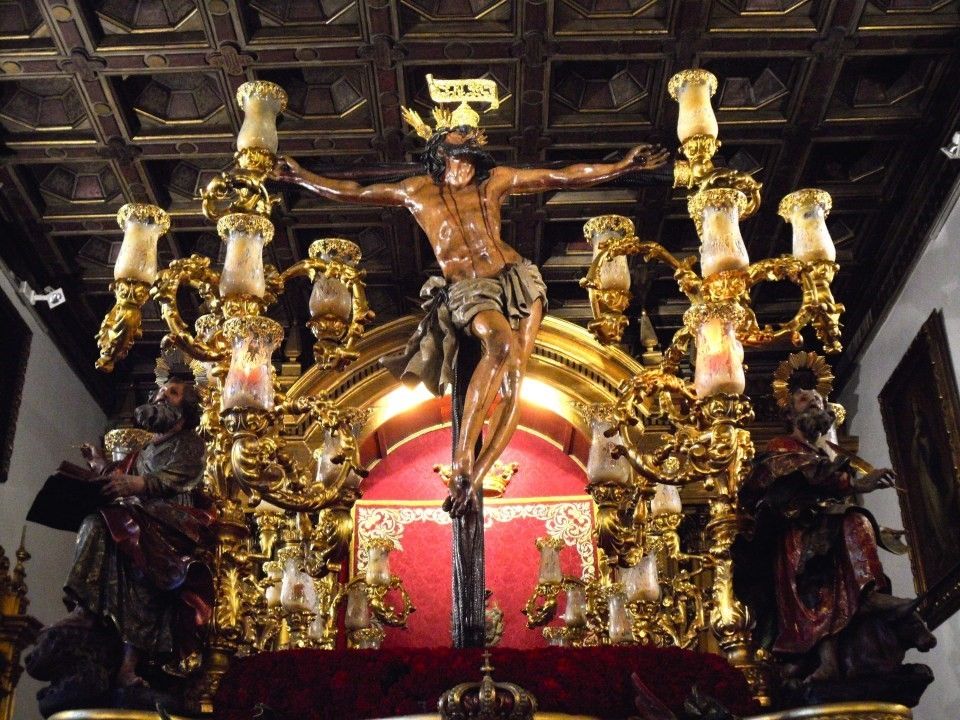
The epitome of Holy Week is Madrugá (the wee hours of Friday morning). We ate “early” around 9 and the next round of pasos began at midnight. Madrugá has a number of pasos including El Silencio, Gran Poder, Los Gitanos and two of the most famous, La Macarena and Esperanza de Triana. Madrugá is when the women wear all black and mantillas on their heads.
As you can see by the lighting changes, we ran around all night watching pasos until 9am! Needless to say everyone’s feet were dying by the end. I don’t know what time my Spanish friend made me take picture with the Roman soldier, but it was probably around 5:30? 6am? The last picture is an example of what Sevilla’s streets looked like for a couple of days with all the wax drippings on the asphalt. Semana Santa was definitely a highlight event in my experience in Sevilla!




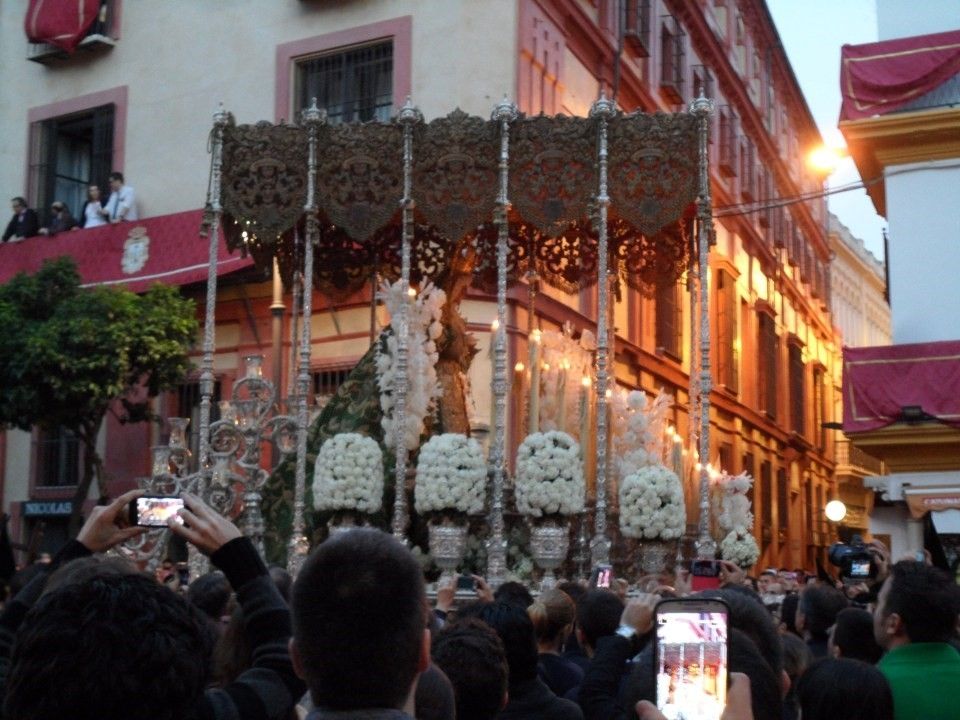

Related Posts
Wish You Were Here—Wish I Were There
Not a day goes by that I’m not deeply grateful for the incredible experience of living in Spain. From weekend adventures to the thrill of navigating a new culture, it’s... keep reading
The Unexpected MVPs of My Suitcase; things I would pack time and time again
Moving abroad sounds glamorous until you realize Spain doesn’t believe in stick deodorant or ice cubes. After a full year of trial, error, I’ve rounded up the little things from the U.S. that brought me so much unexpected comfort. From cozy slippers to hot sauce, these are the MVPs I’ll always pack again. If you're heading abroad and want your new place to feel a little more like home (and a lot less like a weird Airbnb), this list is for you.
Day Trip to Toledo, Spain
If you’re looking to explore more of Spain outside of Madrid, the beautiful city of Toledo is the perfect day trip. A quick 50 minute bus ride will drop you... keep reading
